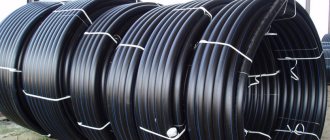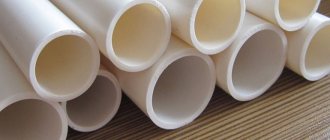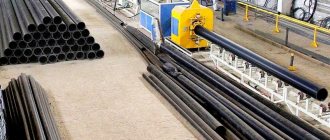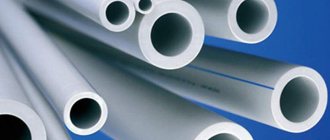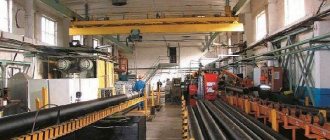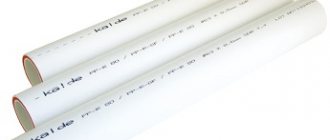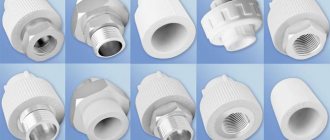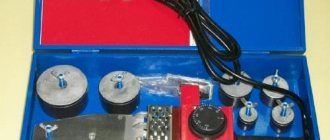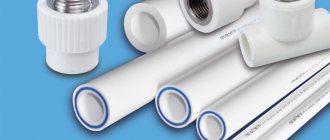Polypropylene (PP, PP) is an organic polymer material of the polyolefin class. It is produced by polymerizing propylene and appears as a white solid with thermoplastic properties. Polymer production remains a popular branch of the chemical industry, as this material is used in many industries. In Russia, the number of manufacturers is gradually increasing, and the quality is not inferior to European analogues.
Buy polypropylene wholesale and retail from factories through the supplier UNITRADE. Delivery is carried out throughout Russia. The products comply with GOSTs and TUs. Contact phone: +7 (495) 54-54-118
Leading polypropylene manufacturing plants in Russia
| Manufacturer | Raw material grade |
PJSC "Ufaorgsintez"
| Balen 01030 | Propylene homopolymer, characterized by increased resistance to mechanical stress, as well as thermal-oxidative aging. Has high antistatic properties. Synthesized in the presence of an organometallic catalyst Order |
| Balen 01130 | Polypropylene (homopolymer), which has a fairly high melt fluidity and good resistance to thermal-oxidative aging. It is characterized by high elasticity and strength. Order |
| Balen 01270 | A propylene homopolymer synthesized in the presence of a complex organometallic catalyst. It has good elasticity and relatively high melt fluidity. The material also provides high resistance to mechanical wear. Order |
| Balen 01370 | Propylene homopolymer (polypropylene) BALEN 01370 is synthesized in the presence of an organometallic catalyst. It has good resistance to thermal-oxidative aging and elasticity. It tolerates mechanical loads well. Order |
| Balen 02003 | A block copolymer of propylene and ethylene, synthesized in the presence of an organometallic catalyst. It is highly durable and withstands mechanical stress and shock. Has increased antistatic characteristics. Resistant to detergents, has high resistance to thermal-oxidative aging. Order |
| Balen 02015 | A block copolymer of propylene and ethylene, characterized by increased impact resistance and relatively high elasticity. It has improved technological characteristics, is resistant to detergents and thermal-oxidative aging. Order |
| Balen 02070 | A block copolymer of propylene and ethylene, characterized by improved impact strength, as well as increased resistance to thermal-oxidative aging. The polymerization reaction occurs in the presence of an organometallic catalyst. Order |
| Balen 02080 | A brand of block copolymer of propylene and ethylene with improved technological properties and fairly high melt fluidity. It has increased resistance to thermal-oxidative aging, as well as high resistance to mechanical damage. Order |
| Balen 03003 | A statistical copolymer of propylene and ethylene, which has high resistance to mechanical stress, as well as to detergents. The material is characterized by high resistance to thermal-oxidative aging and antistatic properties. Order |
| Balen 03015 | Static copolymer of propylene and ethylene with improved technological properties. It has increased resistance to thermal-oxidative aging and high transparency. Forms glossy surfaces. Order |
| Balen 04070 | The material is a mixture of stabilized grades of polypropylene and propylene copolymers in any ratio. The material is obtained as a by-product of the technological process for the production of various brands of balen, in the process of switching from one brand to another. Order |
| Balen 04040 | The polymer is obtained by mixing stabilized balen of different brands, during the transition during production from one brand to another. It has good strength and reliability indicators. Order |
| Balen 04006 | A mixture of polypropylene and its copolymers of various grades. It is obtained during the transition from one brand to another during the production of balen. The mixture is stabilized and has good performance characteristics, high resistance to thermal-oxidative aging, as well as fairly high strength. Order |
| Balen 04009 | The transition grade, obtained as a by-product in the production of various grades of balen, is a mixture of polypropylene and propylene copolymers in various proportions. It is durable and resistant to mechanical wear. Order |
| Balen 04015 | The material is a mixture of different brands of stabilized balen in different proportions. It is obtained during the transition from one brand to another during the synthesis process. It has good resistance to thermal-oxidative aging, as well as optimal mechanical properties. Order |
| Balen 04150 | The material is a mixture of homopolymers and copolymers of propylene of various grades. It is obtained in the process of transferring synthesis from one brand to another. It is highly resistant to thermal-oxidative aging, but its tensile yield and elongation at the yield point are not standardized. Order |
| Balen | Polypropylene Balen is widely used in industry due to its ability to transmit water vapor. This allows the material to be used in the production of food packaging, product wrappers, building materials, pipes, waterproofing coatings and automotive parts. Order |
OAO Nizhnekamskneftekhim
| PP 8300 G | A copolymer of propylene and ethylene, synthesized in the presence of organometallic catalysts. It has improved long-term thermal stability properties and is resistant to thermal-oxidative aging. It has high antistatic properties. Order |
| PP 4445 S | A copolymer of propylene and ethylene obtained in the presence of complex organometallic catalysts. It is highly reliable: it is resistant to thermal-oxidative aging, and also has good long-term thermal stability. Order |
| PP 8348 SM | A block copolymer of propylene and ethylene, with the addition of an antistatic agent and a nucleator, as well as an effective stabilizer. As a result, the material is heat-stable, resistant to thermal-oxidative aging, as well as high mechanical strength and wear resistance. Order |
| PP 8332 M | A copolymer of propylene and ethylene with high resistance to thermal-oxidative aging. The brand is also characterized by increased chemical stability; the material tolerates exposure to both acidic and alkaline environments. It is a good dielectric. Order |
| PP 4132 V | A brand of copolymer of propylene and ethylene with an improved formulation with stabilizers providing extremely high resistance to thermal oxidative aging. It is characterized by low melt fluidity and high resistance to mechanical stress. Order |
LLC "Stavrolen"
| PPG 1035-08 | Propylene homopolymer with improved performance characteristics obtained through a heat stabilizer, anti-corrosion additives and a process stabilizer. It is highly resistant to wear, as well as thermal-oxidative aging. It is synthesized by the gas-phase method in the presence of organometallic catalysts. Order |
| PPG 1120-16 | A propylene homopolymer synthesized by the gas-phase method with a number of stabilizing additives, the composition of which includes a thermal stabilizer, a process stabilizer, and anti-corrosion additives, which allows increasing resistance to thermal-oxidative aging. It features improved technological properties, strength and durability. Order |
| PPG 1250-20 | A homopolymer of propylene, the distinctive feature of which is a narrow molecular weight distribution. The material is synthesized by the gas-phase method in the presence of organometallic catalysts, with the addition of anti-corrosion and stabilizing additives, as well as a rheology control agent. Order |
| PPG 1350-21 | Propylene homopolymer synthesized by the gas-phase method in the presence of an organometallic catalyst. It features improved technological characteristics. The composition includes an anti-corrosion additive, as well as an additive that reduces friction. Order |
| PPG 2019-25 | Statistical copolymer of propylene, improved composition, with heat-stabilizing, structuring and anti-corrosion additives. Provides high performance characteristics of finished products, as well as high organoleptic properties of products. Order |
| PPG 2002-24 | Statistical copolymer of propylene with heat-stabilizing and anti-corrosion additives. It has increased strength, as well as good resistance to thermal-oxidative aging. Order |
| PPG 3008-36 | Block copolymer of propylene with improved technical characteristics: increased resistance to thermal-oxidative aging, as well as increased impact strength. Order |
| PPG 3013-37 | Composition of a propylene copolymer block of improved composition, containing anti-corrosion and heat-stabilizing additives. The material has improved technological properties and is characterized by increased durability due to high resistance to thermal-oxidative aging. Order |
| PPG 3120-43 | Block copolymer of propylene with a structuring additive, as well as anti-corrosion and heat-stabilizing components. The material has increased impact strength, as well as high durability due to resistance to thermal-oxidative aging. Order |
LLC NPP Neftekhimiya
| PP H030 GP/2 | Propylene homopolymer of medium fluidity with balanced physical and chemical properties. Has a standard molecular weight distribution. It has good resistance to mechanical wear, as well as thermal-oxidative aging. Order |
| PP H130 GP/2 | Propylene homopolymer having an optimal formulation with stabilizing additives, which ensures good performance characteristics. Has a standard molecular weight distribution. It is characterized by increased melt fluidity, which determines the scope of application. Order |
| PP H250 GP/2 | High fluidity propylene homopolymer, which is improved with stabilizing additives. It has a standard molecular weight distribution and balanced properties. Provides good performance characteristics to finished products due to increased bending elasticity. Order |
LLC "Poliom"
| PP H030 GP | Propylene homopolymer, characterized by a balanced composition with stabilizing additives. It is a universal general purpose material that provides good performance characteristics. It has average fluidity, which allows you to significantly expand the scope of application of the material. Order |
| PP H250 GP | Propylene homopolymer with a narrow molecular weight distribution. It is distinguished by a balanced composition of stabilizers used in the production of raw materials. It has high fluidity, as well as optimal physical and mechanical characteristics. Order |
LLC "Tobolsk-Polymer"
| PP H030 GP/3 | A propylene homopolymer of medium fluidity, which contains stabilizing additives. The material has balanced characteristics, which makes it an effective solution for many tasks in the production of plastic products. Has a standard molecular weight distribution. Order |
| PP H120 GP/3 | Propylene homopolymer with increased melt fluidity, which is characterized by increased impact strength and high elasticity. Has an optimal formulation that provides resistance to thermal oxidation, as well as mechanical stress Order |
| PP H250 GP/3 | Propylene homopolymer with standard molecular weight distribution. It features a balanced formulation with the inclusion of various stabilizers, as well as good wear resistance. Has high fluidity. Order |
Tomskneftekhim LLC
Polypropylene | |
| PP H007 EX | Propylene homopolymer with low fluidity, stabilized formulation, with standard molecular weight distribution. The polymer has improved resistance to high temperatures and retains its mechanical properties under conditions of prolonged use with hot working environments. The composition includes components that improve the surface properties of the product. Order |
| PP H030 GP | Propylene homopolymer with medium fluidity and improved resistance to mechanical damage. Has a standard molecular weight distribution. The composition contains stabilizing additives that improve the resistance of the material to thermal-oxidative aging. Order |
| PP H120 GP | Propylene homopolymer with increased fluidity and standard molecular weight distribution. The polymer has an improved formulation: increased resistance to photothermal-oxidative aging, as well as improved performance characteristics. Order |
| PP H250 GP | Propylene homopolymer with high fluidity. The polymer has a standard molecular weight distribution. The formulation has been stabilized to increase durability and improve the technical properties of the polymer. Order |
Production processes
Manufacturers of polypropylene in Russia use a machine such as an extruder for basic work. In it, the material undergoes multi-stage processing and then becomes a pipe. The entire production technology is divided into several stages of work.
The first stage of production is the procurement of the required amount of raw materials. Then polypropylene is placed in a special chamber, and it is usually presented in the form of granules or shavings. Sometimes enterprises use recycled material, it is mixed together with the main raw materials.
When heated to a temperature of 240 degrees Celsius, the chips and granules begin to melt and eventually a viscous plastic substance is formed. Due to the fact that Teflon is applied to the inner surface of the machine, the adhesive substance does not stick to the walls.
Typically, Russian-made products are extruded from an extruder measuring 2.5 meters. Since the process is completely autonomous, it takes place very quickly. The operator’s task is to monitor how the machine is operating and troubleshoot any problems. In addition, another task is to set the necessary extruder parameters.
The best machines in Russia produce on average at least 200 kg of finished products per hour. And an ordinary plant producing plastic products in Russia can produce 1000 meters of pipes. After making the blanks, they are cooled in special cooling baths, so they keep their shape perfectly. After all stages of the process, all necessary markings are applied to polypropylene pipes, then after packaging they are sent to the warehouse.
Equipment used
Each type of pipe requires its own production line. But basically all lines consist of different units, here is a list of machines and devices used in Russian enterprises of this type:
- Dispensers of different sizes for measuring and supplying raw materials;
- Extruder, which is the main means of production;
- Devices for pulling and sending products into the cooling system;
- Baths in the form of cooling systems;
- Machines for calibrating finished products;
- Device for cutting and measuring finished goods;
- Packers and labelers.
If you suddenly decide to open such a production in the Russian Federation, then you will need from 700 thousand to 2 million rubles to purchase the necessary equipment.
Raw materials
In Russia, manufacturers use different types of raw materials, depending on what kind of final product they want to receive in the end. Different materials have different performance properties, here are two main types of raw materials: propylene homopolymer is used to create sewer pipes and fittings. In the production of heating and plumbing systems, foreign raw materials are used - random propylene copolymer.
Production of polypropylene pipes and fittings VALTEC (comparative review)
Cooperation with UNITRADE LLC means:
Fulfillment of all contractual obligations, even when market conditions change
Full control of logistics schemes
Product compliance with GOSTs and specifications of manufacturing plants
Supply of products directly from manufacturing plants, our partners are the largest vertically integrated companies in Russia
Continuous operation and immediate response to Client requests
Regular analysis and forecasting of the petroleum products market
Kinds
- Block copolymer It is distinguished by the presence in the macromolecule of alternating homopolymer blocks, different in structure. Thus, a block copolymer of propylene and ethylene is a macromolecule in which monomer groups alternate: propylene and ethylene. Due to this, the polymer has additional properties - improved elasticity, increased resistance to thermal-oxidative aging, or an expanded range of permissible temperatures.
- Homopolymer A macromolecule that is homogeneous in its structure, in which identical monomer units are repeated, the most typical propylene polymer. It has basic properties that can be modified by adding additives and additives to the composition.
- Random (static) copolymer An irregular copolymer in which the monomer units are distributed randomly. Therefore, it is called statistical, since its structure contains 60% propylene monomers and 40% ethylene monomers, but in macromolecules the order of these units can be anything. It is characterized by a high degree of crystallization, and as a result, strength.
Let's consider the advantages of polypropylene products
This type of product has gained great popularity for a reason; there are many reasons why they are often purchased. This is primarily due to the positive properties that this product has, here is a list of them:
- Plastic products have very high strength;
- The material does not have the property of rusting or rotting;
- Able to withstand very large temperature changes;
- Do not affect the quality and taste of water;
- Plastic can be used for a very long time;
- Much lighter weight compared to metal materials.
In addition, thanks to simple manufacturing methods, polypropylene pipes and fittings are much cheaper than those made from other materials.
Basic properties
The raw material of polypropylene is propylene, obtained by cracking petroleum. After processing and polymerization, the substance acquires a number of valuable properties that ensure it is in wide demand. PP is highly resistant to substances: it tolerates acidic and alkaline environments well, and does not dissolve in organic compounds at room temperature. It does not absorb moisture and is not destroyed by water, and is a reliable insulator for electricity.
Granulated polypropylene can be painted or unpainted (mostly white). Organic dyes are used to impart color to primary plastic granules. Copolymers are also in demand - compounds of polypropylene with ethylene, with increased resistance to low temperatures and enhanced beneficial qualities. The copolymer has high impact resistance and is easy to process.
How to choose polypropylene pipes
Structure.
All polypropylene pipes can be divided into three types.
- Single-layer pipes
are made of pure polypropylene; such pipes are best suited for installing cold water supply. - Fiberglass reinforcement
increases the strength of the walls; this type of product copes well with high pressure and temperature (up to 90°C). They are used to install heating systems for private houses. - Reinforcement with foil
allows you to reduce the thermal expansion of pipes, so such products can withstand liquid heating up to +95°C. Their scope of application is the widest.
Installation
. When choosing polypropylene pipes, it is important to know about the nuances of their connection. Joints are welded using special soldering irons, and turns and branches are made by installing fittings. Pipes reinforced with aluminum foil are considered the most difficult to install. Experts recommend removing the metallized layer to the welding depth.
How not to buy counterfeit goods.
There are many counterfeit products on the Russian market, so a potential buyer should know several selection criteria. They will help reduce the risk of buying counterfeit products.
- The first thing you should do is take a photo or remember exactly what the brand logo looks like. You should pay attention to the size of the letters, font, color, number of capital letters. Very often, unscrupulous businessmen make basic mistakes by redrawing the trademark of a well-known manufacturer.
- On the official website you need to study the range of products. Knowing the location of the markings and the color of polypropylene, you can easily identify counterfeit goods.
- Sample pipes should be carefully inspected before purchasing. They must have the same thickness and a close to ideal circular cross-section. The presence of depressions, sagging and other signs of poor-quality casting is not allowed.
We have selected the 11 best manufacturers of polypropylene pipes for the rating. The products of these brands are widely represented in the Russian retail chain. When compiling the rating, the opinion of experts and reviews of domestic consumers were taken into account.
Where is it used?
Polymer materials have created a new generation of technology and played an important role in economic development. Primary polypropylene granules are actively used in production, replacing many expensive analogues and achieving a more efficient production cycle. Material used:
- In mechanical engineering. The high wear resistance and affordable price of polypropylene made it possible to use it for the manufacture of household appliances and cars.
- In medicine, the ability of polypropylene to withstand high temperatures is in demand, which has opened up opportunities for its sterilization. Syringes, inhalers and other equipment are made from polymer.
- In electrical engineering, the material acts as an insulator, and in this area it already competes with polyethylene. It is used in the production of lamp sockets, insulation shells, and the casings of televisions and other electrical appliances are made from it.
- The most important role is packaging. The material is called the “king of polymers” because it is non-toxic, flexible and easy to weld. Polypropylene films will soon seriously displace polyethylene on the market. The material is gaining ground in the manufacture of plastic bottles, containers and other packaging.
The most important factor ensuring the widespread use of polypropylenes is low cost, which makes it possible to reduce the cost of production industries. The material is increasingly used in the production of engineering plastics, because the field of electronics and high technology is in dire need of solutions that can make the product available for purchase. Polypropylene fibers are actively replacing fabrics, this is especially noticeable in the medical field.
Dynamics of growth in polypropylene production
The basic scope of application of polypropylene is the production of pipes used in industry and public utilities.
Thanks to this sector, global production of polypropylene quadrupled between 1990 and 2013, which is twice as high as the production of steel, aluminum, tin, paper and glass, which increased by a maximum of two times. From 2000 to 2013, Russia increased the annual mass of polypropylene produced by 3.5 times - from 243.8 to 848.6 thousand tons, which brought the material to a leading position in development among analogues.
The reason for the explosive growth was the advantages of PP over other materials on the same basis (PVC, polystyrene): it is environmentally friendly, since the manufacturing and disposal process does not harm the environment. Due to its reduced toxicity, legislation is favorable to its manufacturers.

